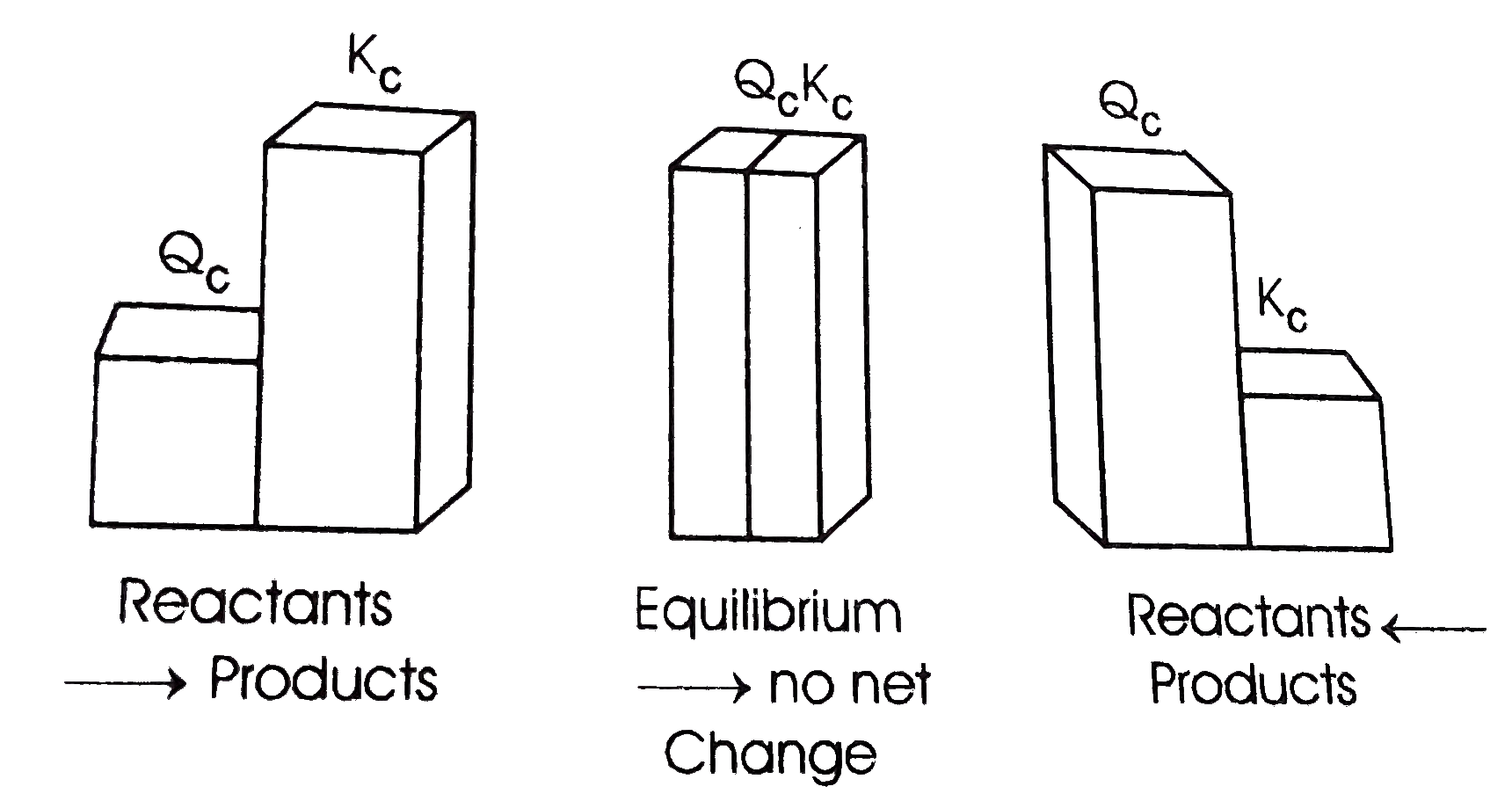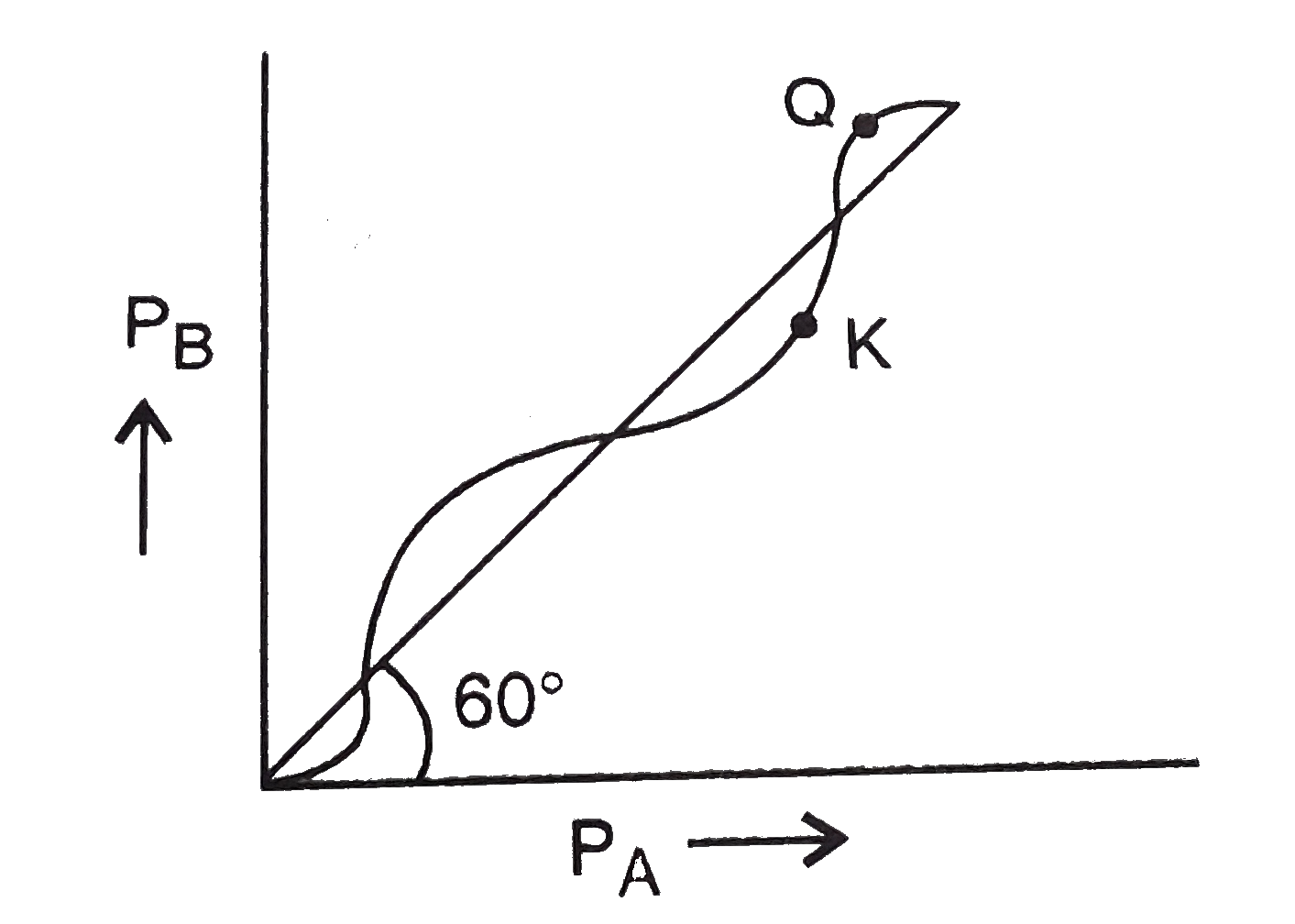At dynamic equilibrium the reaction on both sides occur at the same rate and the mass on both sides of the equilibrium does not undergo any change. This condition can be achieved only when the value of ΔG is
−1
+1
+2
0
The correct Answer is:D
At equilibrium ΔG=0
Topper's Solved these Questions
- BOOK - NCERT FINGERTIPSCHAPTER - THERMODYNAMICSEXERCISE - Higher Order Thinking Skills8videos
THERMODYNAMICS
- BOOK - NCERT FINGERTIPSCHAPTER - THERMODYNAMICSEXERCISE - NCERT Exemplar11videos
THERMODYNAMICS
- BOOK - NCERT FINGERTIPSCHAPTER - THERMODYNAMICSEXERCISE - Spontaneity30videos
THERMODYNAMICS
- BOOK - NCERT FINGERTIPSCHAPTER - THE S-BLOCK ELEMENTSEXERCISE - Assertion And Reason15videos
THE S-BLOCK ELEMENTS
Similar Questions
Knowledge Check
- Question 1 - Select One
Which of the two processes occur at the same rate in order to achieve this equilibrium?
Solute + Solvent→ SolutionASaturation, unsaturationBSaturation, crystallisationCCrystallisation, dissolutionDUnsaturation, crystallisation - Question 2 - Select One
Both mouth and anus occur on the same side in
ACrinoideaBAsteroideaCHolothuroideaDEchinoidea. - Question 3 - Select One
The reaction which is in dynamic equilibrium, ensured us, that the reaction is reversible . But if that the reaction is in equilibrium. The reaction quotient predict either the reversible reaction is in equilibrium or tries to achieve equilibrium. In those reactions which have not achieved equilibrium, we obtain reaction quotient Qc in place of equilibrium constant (Kc) by substituting the concentration of reactant and product at the time, at whih we have to calculate the value of Qc . To determine the direction at which the net reaction will proceed to achieve equilibrium, we compare values of Qc and Kc. The three possible cases are shown as comparison of Kc and Qc in the following figures.

Change in Gibbs free energy, i.e., ΔG is the driving force of any reaction.
For spontaneous reaction , ΔG=−ve
For non-spontaneous reaction , ΔG=+ve
For reaction at equilibrium , ΔG=0
Thermodynamically, we know that
ΔG=ΔG∘+RTlnQ, where Q is reaction quotient and ΔG∘= change in Gibbs energy at standard condition.
For equilibrium A(g)⇔B(g)(Keq=1.732) If the pressure of the system [varied by introducing a stream of A(g) and B (g) is represented by the curve at constant temperature T.

What will be the value of difference of standard Gibbs free energy to Gibbs free energy change at point Q in the figure above ?A−veB+veC0Dcannot be predicted
By adding or subtracting any value to both sides of the inequality, inequality ______. (changes/does not change).
View SolutionRead the given passage and answer the questions:
According to Arrhenius equation, the lower the value of activation energy, faster will be the rate of reaction. A small amount of catalyst can catalyse a large amount of reagents. A catalyst does not alter Gibbs energy. ΔG of a reaction. It catalyses the spontaneous reactions but does not catalyse non-spontaneous reactions. It is also found that a catalyst does not change the equilibrium constant of a reaction rather, it helps in attaining the equilibrium faster, that is, it catalyses the forward as well as the backward reactions to the same extent so that the equilibrium state remains same but it reached earlier.
Q. Out of Gibb's energy and equilibrium constant, which quantity is changed by the catalyst?View SolutionWhat would be an effect on equilibrium price and equilibrium quantity if demand and supply both fall at the same rate?
Or
Market for a good is in equilibrium. There is simultaneous "decrease" both in demand and supply but there is no change in market price. Explain with the help of a schedule how is it possible.View SolutionThe reaction which is in dynamic equilibrium, ensured us, that the reaction is reversible . But if that the reaction is in equilibrium. The reaction quotient predict either the reversible reaction is in equilibrium or tries to achieve equilibrium. In those reactions which have not achieved equilibrium, we obtain reaction quotient Qc in place of equilibrium constant (Kc) by substituting the concentration of reactant and product at the time, at whih we have to calculate the value of Qc . To determine the direction at which the net reaction will proceed to achieve equilibrium, we compare values of Qc and Kc. The three possible cases are shown as comparison of Kc and Qc in the following figures.

Change in Gibbs free energy, i.e., ΔG is the driving force of any reaction.
For spontaneous reaction , ΔG=−ve
For non-spontaneous reaction , ΔG=+ve
For reaction at equilibrium , ΔG=0
Thermodynamically, we know that
ΔG=ΔG∘+RTlnQ, where Q is reaction quotient and ΔG∘= change in Gibbs energy at standard condition.
For equilibrium A(g)⇔B(g)(Keq=1.732) If the pressure of the system [varied by introducing a stream of A(g) and B (g) is represented by the curve at constant temperature T.

Which of the following is the correct statement at point R in the figure above ?View SolutionAssertion:- The reaction quotient Q, has the same presentation form as the equilibrium constant K and Q is evaluated using any given concentrations of the species involved in the reaction, and not necesssarily equilibrium concenetrations.
Reason:- If the numerical value of Q is not the same as the value of equilibrium constant, that time reaction will never proceed.View Solution
